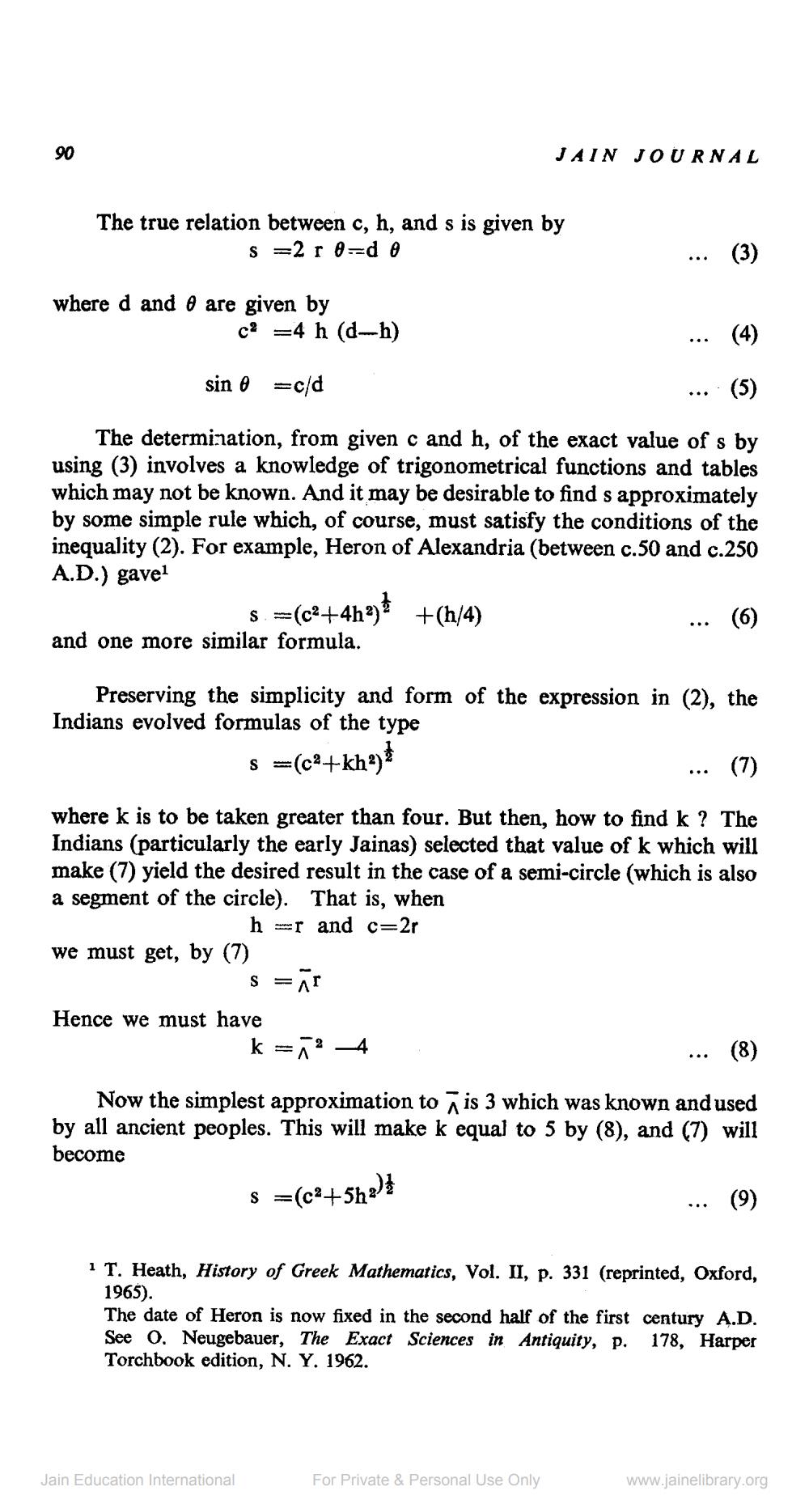Book Title: Jain Journal 1979 01 Author(s): Jain Bhawan Publication Publisher: Jain Bhawan Publication View full book textPage 4
________________ JAIN JOURNAL The true relation between c, h, and s is given by S =2 r 0=do where d and 0 are given by ca =4 h (d-h) sin 8 =c/d The determination, from given c and h, of the exact value of s by using (3) involves a knowledge of trigonometrical functions and tables which may not be known. And it may be desirable to find s approximately by some simple rule which, of course, must satisfy the conditions of the inequality (2). For example, Heron of Alexandria (between c.50 and c.250 A.D.) gavel s. =(c2+4h2) +(h/4) ... (6) and one more similar formula. Preserving the simplicity and form of the expression in (2), the Indians evolved formulas of the type s =(c2+kh2) ... (7) where k is to be taken greater than four. But then, how to find k ? The Indians (particularly the early Jainas) selected that value of k which will make (7) yield the desired result in the case of a semi-circle (which is also a segment of the circle). That is, when hr and c=2r we must get, by (7) s =ūr Hence we must have k=1? 4 ... (8) Now the simplest approximation to his 3 which was known and used by all ancient peoples. This will make k equal to 5 by (8), and (7) will become s =(c2+592) ... (9) 1 T. Heath, History of Greek Mathematics, Vol. II, p. 331 (reprinted, Oxford, 1965). The date of Heron is now fixed in the second half of the first century A.D. See O. Neugebauer, The Exact Sciences in Antiquity, p. 178, Harper Torchbook edition, N. Y. 1962. Jain Education International For Private & Personal Use Only www.jainelibrary.orgPage Navigation
1 2 3 4 5 6 7 8 9 10 11 12 13 14 15 16 17 18 19 20 21 22 23 24 25 26 27 28 29 30 31 32 33
